#Craft tips
Explore tagged Tumblr posts
Text
✨GARLIC✨
We’ve all heard the folklore that garlic can protect against blood sucking vampires, but it can really pack a protective punch against energy vampires as well.
Element: Water Deities: Hecate Zodiacs: Cancer Planet: Moon Crystals: Moon Stone, Rose Quartz, Citrine Good For: Protection, Cleansing, Connection, Stimulation, & more! Protects Against: Negaforces, watchers, & curses.
For more tips, tricks, tonics, and tintures check out the Wicked Witch's Web! 🌛🖤🌜
Source: The Wicked Witch of the Web
#Garlic#Garlic Herb#Magickal Correspondences of Garlic in Witchcraft#Magical Correspondences of Garlic#herbs#spices#wicked's grimoire#wicked's herb grimoire#spell work#witchcraft#green witch#potions#spells#Rituals#the wicked witch of the web#protection#magick#Citrine#Magickal Properties of Garlic#Witchcraft Tips#Spritual Meaning of Garlic#Lust#Connection#Moon#Cancer#Hecate#Moonstone#Water#Rose Quartz#craft tips
13 notes
·
View notes
Text
✨The Water Element✨
Direction: West
Correspondences: Clarity, intuitioin, fluidity, emotions
Through the element of water we are able to access emotions and flexibility. Water is crucial to our survival as humans, as staying properly hydrated can greatly improve one’s quality of life, but as witches, we rely on water to help us connect with our emotions, and therefore, our energetic frequency.
Water is closely related to the emotional realm as emotions are the only thing as fluid and constantly moving as water. Water is also deeply connected with the Moon, which is such an important player in the Craft.
Visit the Wicked Witche's Web 🌛🖤🌜
Source: The Wicked Witch of the Web
#Water#Water Element#Elements#The Wicked Witch of the Web#Wicked's Grimoire#Grimoire#Book of Shadows#Spell Book#Spells#Ritual#Magick#Magic#Magickal Correspondences of Water#baby Witch#New Witch#Beginner Witch#Witch#Witchtips#Witchcraft Tips#Craft Tips#Witchcraft#wicked tips
10 notes
·
View notes
Note
How do you begin the first chapter of a story you already have planned out?
Always with an action!!
I personally don't believe in telling people there are wrong ways to do a thing, but I will describe what I personally think is best for the opening scene of a new story/novel.
A really common pitfall, in my opinion, for any fictional narrative is getting caught up in exposition. It makes sense that we get the urge to do things this way, because it's how we tell stories to friends about things that have happened to us.
"Okay, so let me give you background so you know who is who or whatever..." or "Okay, so for context..." are how I start a lot of tea spilling sessions, and its great for colloquial storytelling, but not a great way to get readers engaged from the start.
Whenever I start a book, I think of it less as a historical account and more of myself as the writer arriving to the character's life at a specific point in time, and leaving it at a specific point in time. Because of this, I think the best way to start a story is in the middle of something in their day. Here are some of the first paragraphs from my vampire story:
I scraped another jagged line in the already-worn paint on the wall, marking another tick among the other tidy rows of carved lines in the wall. I relished the feeling of old paint and soft, decaying wood sliding beneath my too-long fingernail. It hurt, but at least I was feeling something. The first thing they did to me when I arrived at The Tower was glamour my name away. One moment I was a person, and the next I wasn’t. All I was left with was the milk-warm feeling of the glamour on me dissipating too quickly, leaving me cold and without a sense of self. I could remember everything about my life—everything that had led me to this horrific moment, but not the core of my being. Not the most basic of identifiers. Not my name.
And another from my Unseelie Court Meets Peaky Blinders WIP:
I pressed my back against the cold, damp brick outside the public house on Main and Besom. My heart raced so fast that I could feel the steady thump of it painfully in my neck. I didn’t know how far I’d run, but I knew I’d done it faster than I ever had before. How many days late was I now? Five? No wonder Thomas had two others in tow. I panted, my ribcage straining against my corset, even with it only loosely laced. I felt like I could hardly get a breath in at all. Closing my eyes and forcing myself to slow, I looked down the alleyway behind the pub. If I dodged down that way, I’d have to walk through some of the dodgier areas of The Strid, but it would be better than risking running into the Half-Blind Barber’s men. I’d heard about Thomas’s proclivities from my friends in the Rose Garden, and I knew that he would relish the chance to carve me up like a roasted pheasant.
I like starting stories this way because 1) it's way more fun to write for me than to spend hours trying to come up with an engaging, yet exposition-y opening and b) I get to lead with character instead of trying to find some way to shoehorn them into the lore.
The thing that's really awesome about your reader? They usually read a lot and can fill in a lot of the blanks. I found when I was first writing I always panicked about the reader seeing my story EXACTLY how I saw it in my mind. But at the end of the day, that's not actually that important and over-explaining anything can actually ruin reader immersion.
I try to never write two thousand words of description where a well-placed metaphor or comparison will do. Let your reader's mind do the heavy lifting.
Could I describe a castle in thousands of words talking about the period of architecture and the way that the buttresses look? Yes. I can. You know what's faster and more entertaining to read?
"The castle has the austere elegance of a sacred temple, and was nearly as quiet as you would expect one to be, too."
You have an image in your mind, reading that, right? See, in my head, I see a mormon temple; not because I am mormon, but because I have been to a mormon temple and I find their structures beautiful but also incredibly, deeply haunting.
Someone else may think of the time they visited the Sistine Chapel. Or of the Wayfarer Chapel in Palos Verdes, because they had an aunt who got married there. Yet another person may thing of their local jewish temple. Another person may think of Wyrm's Crossing in Baldur's Gate. At the end of the day, it doesn't truly matter what they see in their heads or understand is going on based on the text--what matters is that they can glean what this place looks, sounds, and maybe even smells like because they have linked it to a place that they have ALREADY experienced IN REAL LIFE)
All of those tangents to say--I don't worry about backstory until I need it. I like to try to make the reader feel like they're getting to know the characters at the same time they're getting to know each other.
Sorry for this very long winded answer--thank you for asking me about writing! I LOVE talking about it (as you can tell rip)
#writing community#writers on tumblr#writing#writeblr#authors#my writing#bg3#romantasy#craft tips#writing craft#writing tips#writing help
20 notes
·
View notes
Text
“I want to embroider but I can’t draw!”
I gotchu.

Buy these and some regular tracing paper. Then go trace any picture you want! Iron it on to your fabric.
Now you have an outline for whatever you want to embroider. just make sure it’s something that’ll look good backwards before you begin.
3 notes
·
View notes
Text
I really want to make Lucy Gray’s outfit (specifically from the movie). I want it to be an outfit for practicality-that I could wear weekly or monthly or something, but I don’t know how to sew something to last like that. Does anyone have any tips? Her dress:

#craft tips#diy craft#diy sewing#sewing#diy dress#hunger games#hunger games ballad of songbirds and snakes#cosplay#cosplay tips
10 notes
·
View notes
Text
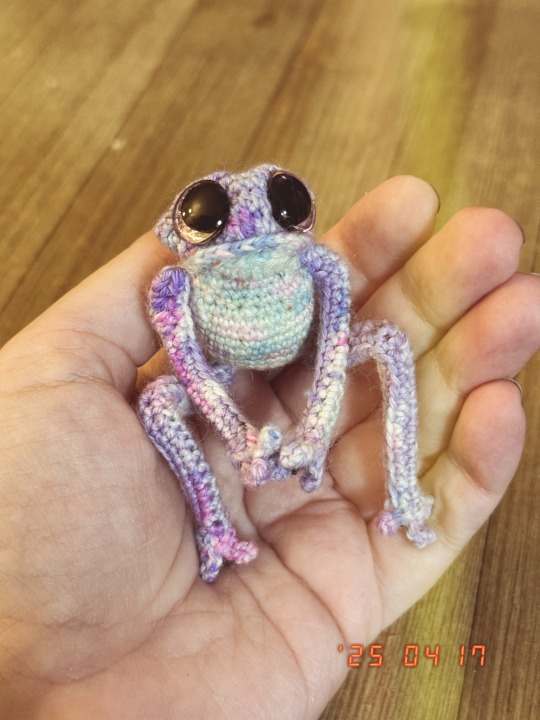
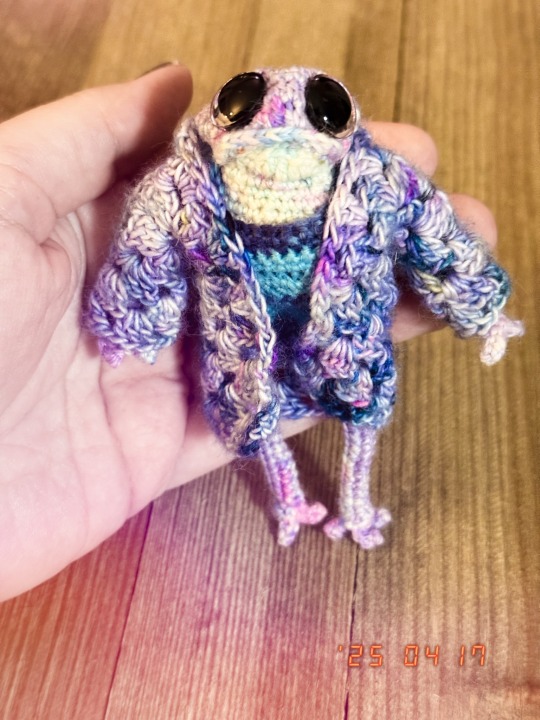
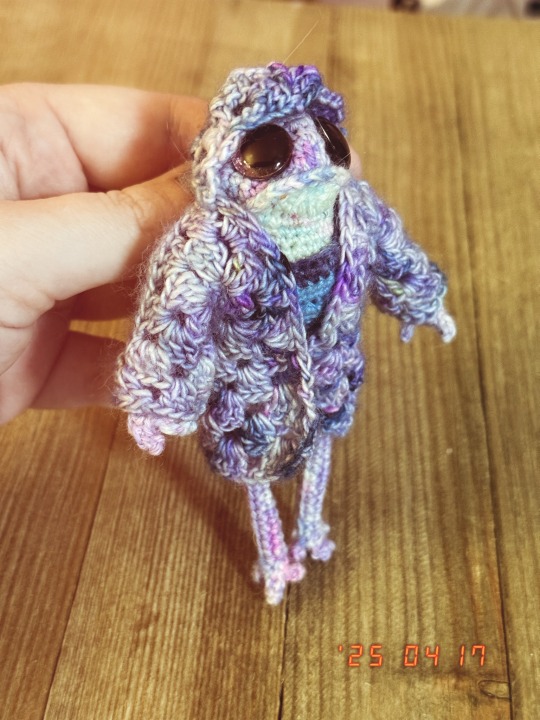
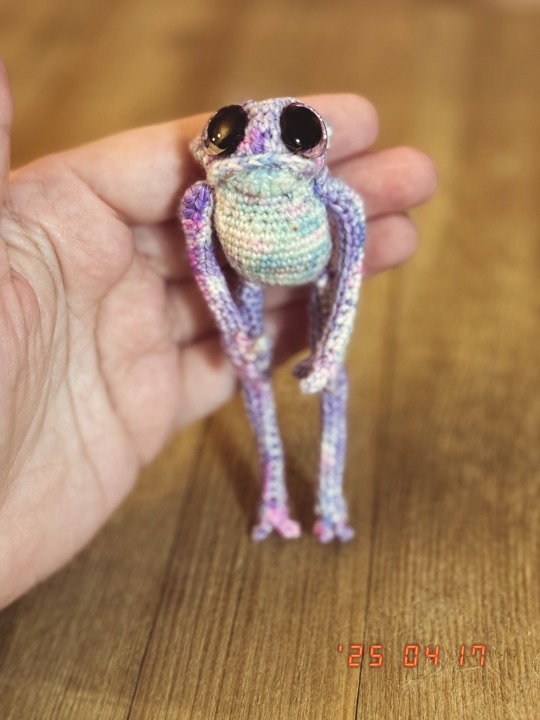
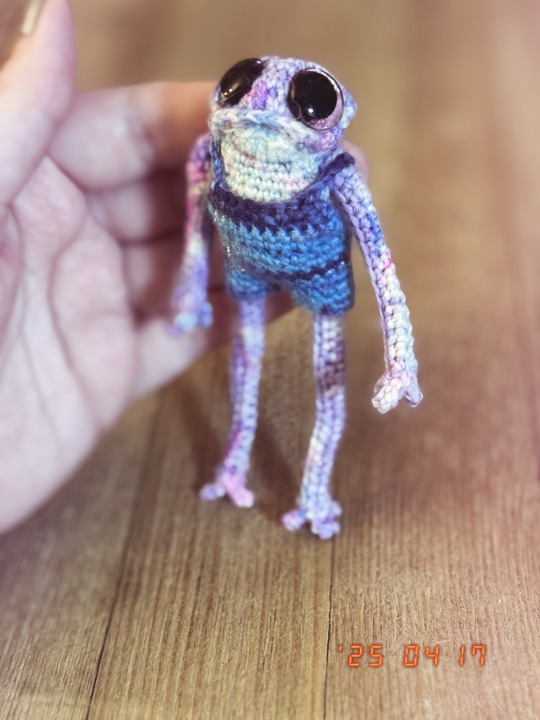
Mila is ready for big adventures, despite her tiny size. To prepare for those adventures, she picked out her perfect companion outfit, playful glittery short-alls and a cozy hooded cardi.
Crochet toad/frog pattern by Claire Garland
Short-alls designed by me
Cardi designed by me
She is made with sock yarn, a 1.5 hook, and wires.
#crochet#amigurumi#fiber art#fiber crafts#crocheted#crafting#crafts#crocheters of tumblr#chroniccraftywitch#crochetersoftheworld#dotpebblesknits#knit frog#crochet tips#crochet doll#crochet frog#viral frog#frogs in sweaters#i made this frog#crocheted frog
6K notes
·
View notes
Text
Some little things I've learned over a decade of witchcraft:
If you are feel called to work but are tired/drained, sit outside. Take in all the energies around you. Nature can help charge you
Every witch does a little bit of a bunch of types of magic but sticks mainly to one or two in general. You usually won't be eclectic forever. You'll find what magics work best with you.
Never be lazy or cut corners with spirits. Always be respectful and always tell them to leave when you're done
When you see a plant or ingredient with a long list of properties, there are different things at play. Season of collection, the part of the plant, the health of the plant, etc all play a role in impacting which properties it will carry.
Don't call on spirits unless you have confidence and control
Be careful with sea/water magic. Get into it gently and slowly until you have the energy figured out because it can get out of hand quickly.
Adding a little pinch of magic into your breakfast can make a major difference in your day.
Your personal emotions/feelings over something will impact a work
Planting some plants is good, not only to have a garden, but the dirt helps cleanse you too. Get all dirty and muddy. It's good for ya
Not all trees are nice
The more you listen to your intuition, the easier it will be to tell it apart from your anxieties and worries
Incense is very easy to make which is why it's usually cheap to buy. But you can find a million tutorials online on how to make your own personal incense which is great if you want a spell to take effect over a while but also want to infuse the fire energy in it.
The more you work with something the better feel you get for it. Cinnamon goes in almost everything i cook and most of my spells because me and cinnamon just get right along
Your path is yours and no one else's. It will look like yours and no one else's
#witch community#witchblr#witchcore#witchcraft#witches#witch#witch craft#grimoire#occult#witch aesthetic#witchy#witch tips#witchery#witches of tumblr#witchy things#witchy vibes#witchy tips#witchy tumblr#witch advice#magic
5K notes
·
View notes
Text
























Happy one year anniversary ISAT! To celebrate I wanted to share the lil strips I made for my friends when they reached the end of the game! They're all meant to be snippets of life post game and a glimpse into the world I'm making for Loop.
#isat#in stars and time#in stars and time spoilers#so to explain the last two strips#loop makes a third wish in their head about how they want to know what the future holds for them#and that flashes them to the change god who also did not see that coming#the change god and loop chat a bit and the last strip is the tail end of the conversation: a fun tip that loop can look human again#the starry curtain and faint hand is meant to be the Universe but not as an actual deity just as a stand in image for an unstoppable force#like yknow the hand that crafts the wishes#and reminder for loop that the universe is always there watching and its time to get back to the world stage#what do they do next???? maybe ill share my thoughts later#the draws
7K notes
·
View notes
Text
A bowl of rice sounds nice
everyone else's money bowls: money! herbs! green candle!
me: hm yes but what if... rice?
408 notes
·
View notes
Text
Quick Carve Pumpkin
Quick and easy outdoor Halloween decoration.
You will need:
One pumpkin with lid carved and interior cleaned out Metal apple corer Tealight candle
If time isn’t on your side or you are too daunted by the idea of trying to carve some spectacular image on your Halloween pumpkin, try this quick idea:
Once you have carefully carved a lid and cleaned out the seeds and have a hollow pumpkin ready for carving, take a metal apple corer and carefully push through circles at regular or random intervals around the pumpkin, taking care not to cut yourself. Remove the cored pieces. Place tealight inside and your decoration is done. Hurray! More time for trick and treats. WARNING: This is not a child’s toy. Keep away from babies and children.
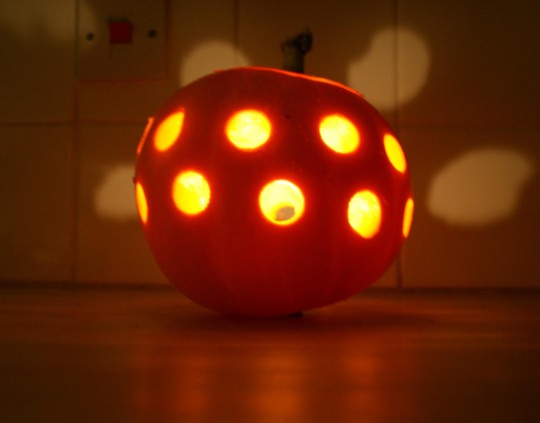

0 notes
Text
✨FEVERFEW✨
Feverfew is incredibly high vibrational and not only does it have powerful healing properties, but it also has the ability to break bindings and curses.
Element: Earth Deities: Aphrodite, Venus Zodiacs: Taurus Planet: Venus Crystals:Rose Quartz, Clear Quartz, Selenite, Moonstone Good For: Health, love, purification, protection, & more! Protects Against: Bindings, self-doubt, poor health
For more tips, tricks, tonics, and tintures check out the Wicked Witch's Web! 🌛🖤🌜
Source: The Wicked Witch of the Web
#Feverfew#Feverfew Herb#Magickal Correspondences of Feverfew in Witchcraft#Magical Correspondences of Feverfew#potions#Magickal Properties of Feverfew#herbs#the wicked witch of the web#spices#wicked's herb grimoire#spell work#wicked's grimoire#green witch#witchcraft#spells#Rituals#Kitchen Witch#Baby Witch#Witchblr#Craft Tips#Wicked Tips#Health#Love#Taurus#Aphrodite#Venus#Binding#Rose Quartz#Spiritual Meaning of Feverfew#Spell craft
10 notes
·
View notes
Text
✨ The Ego✨
This was a painstaking piece to write because the Ego is an elusive bastard and my own created several blocks to keep me from unlocking this door. It took two years and a hundred thousand words to come to this simple conclusion about this widely debated subject:
The Ego is responsible for feedback.
That’s it, we can all go home now.
I’m serious. Once you understand that its only purpose is to give feedback for you and your inner-being to decipher for authenticity before letting it influence your experience you have the key to altering your reality.
The Ego is a collection of predefined beliefs that you’ve accumulated throughout your life. The Ego is the first voice in your mind to pipe up when something occurs in your experience;
it’s the judgemental reaction.
Before we learn how to tame it, the Ego rules our lives. It determines what we believe and what we manifest.
To learn more about the Ego,
How to Identify It
How to Tame It
The Ego's Purpose
&
Ego Blocks
Visit the Wicked Witche's Web 🌛🖤🌜
Source: The Wicked Witch of the Web
#Parts of the Spiritual Self#Ego#Ego Blocks#Psychology#Manifesting#Self Care#the wicked witch of the web#wicked witch#witchcraft#wicked tips#witchcraft tips#craft tips#spirituality#spirtual awakening#Spiritual growth#Understanding
2 notes
·
View notes
Text
What I discovered is if you dye wool with food colouring do NOT leave it anywhere sunny. I put a pair of socks by my window foe a couple of weeks (it's been very sunny but windows filter some UV) and the side that was facing the sun is greyish pink now. I forget how much work goes into making pigments lightfast and obviously food colouring doesn't have that feature. I expect in ordinary use this won't be much of a problem. But these socks are so ugly now I may have to spot re-dye them.

Here you can see the pretty bright green where it wasn't in the sun, and the ugly brownish thing where it was. These have never been washed (one's still being knitted) so this is all sun damage.
1 note
·
View note
Text
#hah! i sure love to edit my silly little funny tumblr videos!#pro tip! watch until the end! i promise itll be sooo fun#dan and phil#phan#dnp crafts
507 notes
·
View notes
Text
Villains vs. Antagonists (Guide For Writers)
Hey there, fellow writers and wonderful members of the writeblr community! 📚✍️ It's Rin here and...
Today, we're diving into a topic that's close to many writers' hearts: villains and antagonists. These characters often steal the show, driving our plots forward and giving our heroes something to push against. But here's the thing – while these terms are often used interchangeably, they're not quite the same. So, let's unpack this, shall we?
First things first, let's break down the difference between a villain and an antagonist. It's a distinction that can really elevate your storytelling game!
An antagonist is simply a character (or force) that opposes your protagonist. They're the obstacle, the challenge, the thing standing in the way of your main character achieving their goal. Here's the kicker: an antagonist doesn't have to be evil. They could be a rival love interest, a stern parent, or even nature itself.
A villain, on the other hand, is a specific type of antagonist. They're the bad guy, the evildoer, the character with malicious intent. All villains are antagonists, but not all antagonists are villains. Mind-blowing, right?
Let's look at some examples to make this clearer:
In "Romeo and Juliet," the feuding families are antagonists, but they're not villains. They oppose the protagonists' desire to be together, but they're not evil.
In "Harry Potter," Voldemort is both an antagonist and a villain. He opposes Harry (making him an antagonist) and he's also evil (making him a villain).
In "Cast Away," the island and the challenges of survival are the antagonists. There's no villain in sight!
Now that we've got that sorted, let's dive deeper into how to create these characters and use them effectively in your writing.
Creating Antagonists:
Define their opposition: What specifically does your antagonist do to oppose your protagonist? This could be physical, emotional, or ideological opposition.
Give them a reason: Why are they standing in your protagonist's way? Even if it's not justified, there should be a reason that makes sense to the antagonist.
Make them strong: Your antagonist should be a worthy opponent. They need to pose a real challenge to your protagonist to keep things interesting.
Consider their perspective: Remember, your antagonist is the hero of their own story. Try writing a scene from their point of view to understand them better.
Create contrast: Your antagonist should in some way contrast with your protagonist. This could be in values, methods, or personality.
Creating Villains:
Establish their evil: What makes your villain "bad"? Is it their actions, their beliefs, or both?
Develop their backstory: How did they become evil? A compelling villain often has a tragic or twisted history.
Give them dimensions: Pure evil can be boring. Give your villain some complexity – maybe they love their cat or have a soft spot for classical music.
Create a strong motivation: What drives your villain? Greed? Revenge? A twisted sense of justice? The stronger and more relatable the motivation, the more compelling your villain will be.
Make them smart: Your villain should be clever enough to pose a real threat. They should be able to anticipate and counter your protagonist's moves.
Now, let's talk about how to use these characters in different genres. Because let's face it, a villain in a romance novel is going to look very different from one in a fantasy epic!
In Romance: Antagonists in romance are often rivals for the affection of the love interest, or perhaps societal norms or family expectations standing in the way of true love. Villains are less common, but when they appear, they might be abusive exes or manipulative friends trying to sabotage the relationship.
Tip: In romance, make sure your antagonist's motivations are clear and relatable. We should understand why they're opposing the main relationship, even if we don't agree with their methods.
In Fantasy: Fantasy is ripe for both antagonists and villains. You might have a Dark Lord seeking to conquer the world (classic villain) or a rival magic user competing for the same goal as your protagonist (antagonist).
Tip: In fantasy, world-building is key. Make sure your antagonist or villain fits logically into the world you've created. Their powers, motivations, and methods should all make sense within the rules of your fantasy realm.
In Mystery/Thriller: In these genres, your antagonist is often the perpetrator of the crime your protagonist is trying to solve. They might not be evil (maybe they committed a crime of passion), or they could be a full-fledged villain if their crimes are particularly heinous.
Tip: In mysteries, your antagonist needs to be clever enough to challenge your detective protagonist. Leave subtle clues about their identity or motives, but make sure they're smart enough to almost get away with it.
In Literary Fiction: Here, antagonists are often more abstract. They might be societal expectations, personal flaws, or even time itself. Villains in the traditional sense are less common, but morally grey characters who oppose the protagonist are frequent.
Tip: In literary fiction, focus on the nuances of your antagonist. They should be as complex and flawed as your protagonist, with their own rich inner life.
In Sci-Fi: Science fiction offers a wide range of possibilities for antagonists and villains. You might have alien invaders, oppressive governments, or even well-meaning scientists whose creations have gone awry.
Tip: In sci-fi, make sure your antagonist or villain is consistent with the technological and social aspects of your imagined world. Their methods and motivations should make sense within the context of your sci-fi setting.
Now, let's dive into some tips to make your antagonists and villains the best they can be in your novel:
Make them believable: Whether you're writing a mustache-twirling villain or a morally grey antagonist, their actions and motivations should make sense within the context of your story and their character.
Give them a personal connection to the protagonist: The conflict becomes much more engaging when it's personal. Maybe your antagonist and protagonist used to be friends, or they're fighting over the same goal.
Show their impact: Don't just tell us your antagonist is a threat – show us the consequences of their actions. Let us see how they affect your protagonist and the world of your story.
Give them wins: Your antagonist or villain should have some successes along the way. If they're always failing, they won't seem like a credible threat.
Humanize them: Even if you're writing a truly evil villain, give them some humanizing traits. Maybe they have a pet they dote on, or a tragic backstory that explains (but doesn't excuse) their actions.
Make them adaptable: A good antagonist doesn't stick to one plan. When the protagonist foils them, they should be able to come up with new strategies.
Give them their own character arc: Your antagonist or villain should grow and change throughout the story, just like your protagonist does.
Use them to highlight your protagonist's strengths and weaknesses: Your antagonist should challenge your protagonist in ways that force them to grow and change.
Consider their presentation: How do other characters react to your antagonist? How do they present themselves to the world versus who they really are?
Don't forget about henchmen: If you're writing a villain, consider giving them some underlings. This can add depth to their character and provide more challenges for your protagonist.
Remember, whether you're crafting a dastardly villain or a complex antagonist, these characters are crucial to your story. They're the ones who push your protagonist to grow, who raise the stakes, and who often drive the plot forward.
But here's a gentle reminder: while it's important to make your antagonists and villains compelling, be mindful of the impact your writing might have. If you're dealing with heavy themes or traumatic events, handle them with care and sensitivity.
Now, I know we've covered a lot of ground here, and you might be feeling a bit overwhelmed. That's okay! Writing complex characters is a skill that develops over time. Don't be afraid to experiment, to try different approaches, and to revise and refine your antagonists and villains as you go.
One exercise I find helpful is to write a short story from your antagonist's or villain's point of view. This can help you understand their motivations better and ensure they feel like real, three-dimensional characters.
Another tip: watch movies or read books in your genre and pay special attention to how they handle antagonists and villains. What works well? What doesn't? How can you apply these lessons to your own writing?
Remember, there's no one "right" way to create these characters. What matters is that they serve your story and engage your readers. Trust your instincts, and don't be afraid to push boundaries or subvert expectations.
As you work on your antagonists and villains, keep in mind that they're not just there to make life difficult for your protagonist. They're an integral part of your story's ecosystem. They shape the plot, influence character development, and often reflect themes or ideas you're exploring in your work.
And remember, writing is a journey. Your first draft of an antagonist or villain might not be perfect, and that's okay. The beauty of writing is in the revision, in the gradual sculpting of characters until they leap off the page.
Lastly, don't forget to have fun with it! Creating antagonists and villains can be some of the most enjoyable parts of writing. Let your imagination run wild, explore the darker sides of human nature, and see where your characters take you.
I hope this deep dive into antagonists and villains has been helpful and inspiring. Remember, you've got this! Your unique voice and perspective will bring these characters to life in ways no one else can.
Happy writing! 📝💖 - Rin. T
Before you go, why not join us at The Write Right Society? We're a supportive Tumblr community where writers lift each other up. Whether you're a newbie or a pro, we'd love to have you! Share your work, get feedback, and connect with fellow wordsmiths, writers and aspiring authors.

#writeblr#writing#writing tips#writers block#creative writing#on writing#writers and poets#how to write#writers on tumblr#thewriteadviceforwriters#amwriting#writingtips#writing tips and tricks#writing craft#antagonist#morally grey villain#tropes#characters#heroes and villains#writing advice#romance writing#writing a book#writing blog#novel writing#writing community#writing guide#writing ideas#writing inspiration#writing prompts#writing reference
800 notes
·
View notes